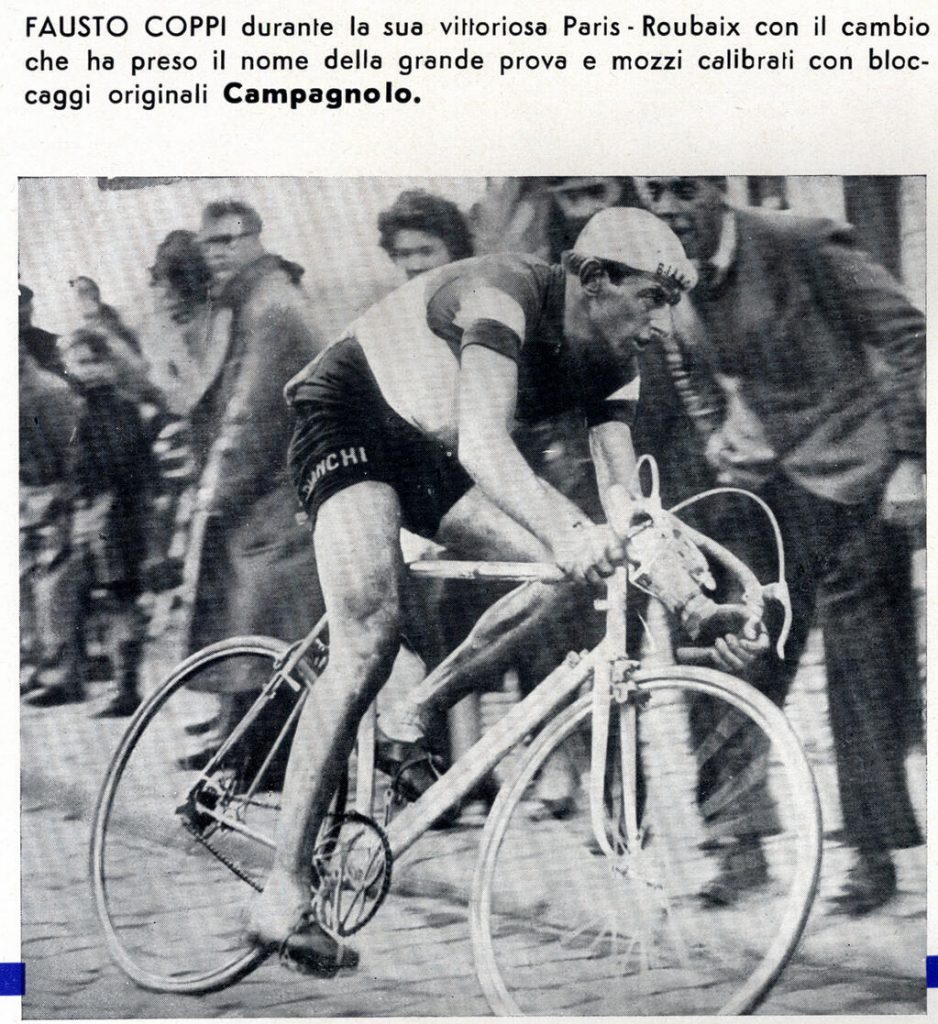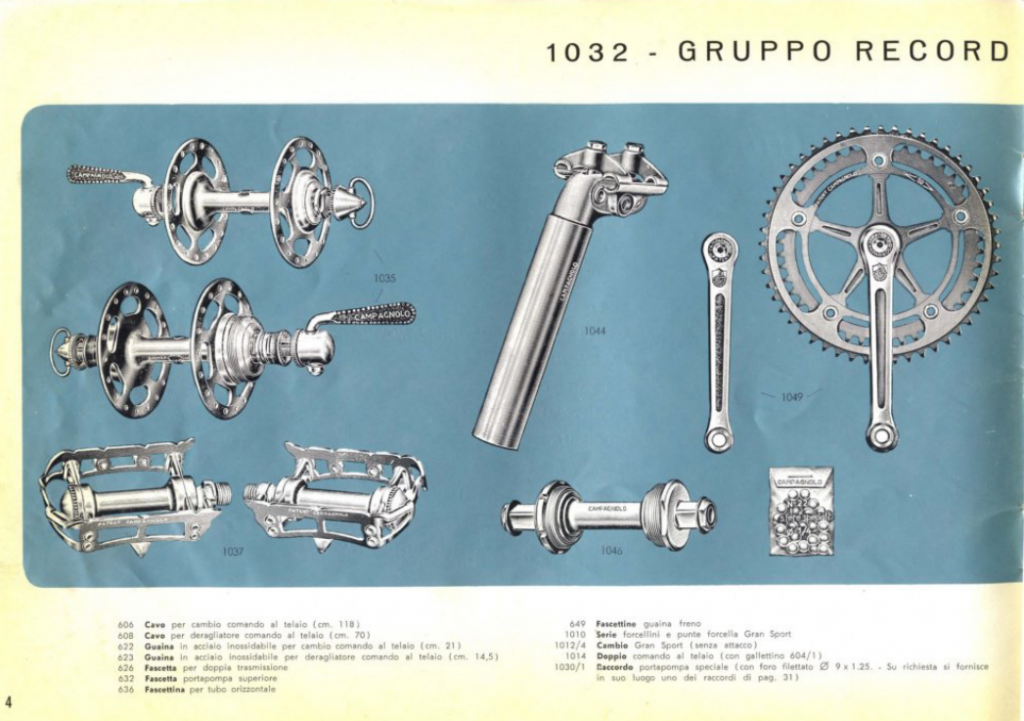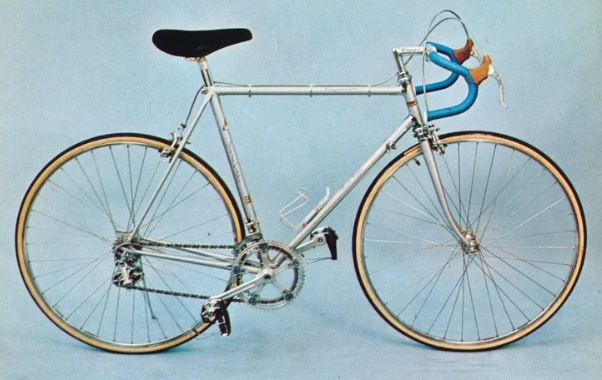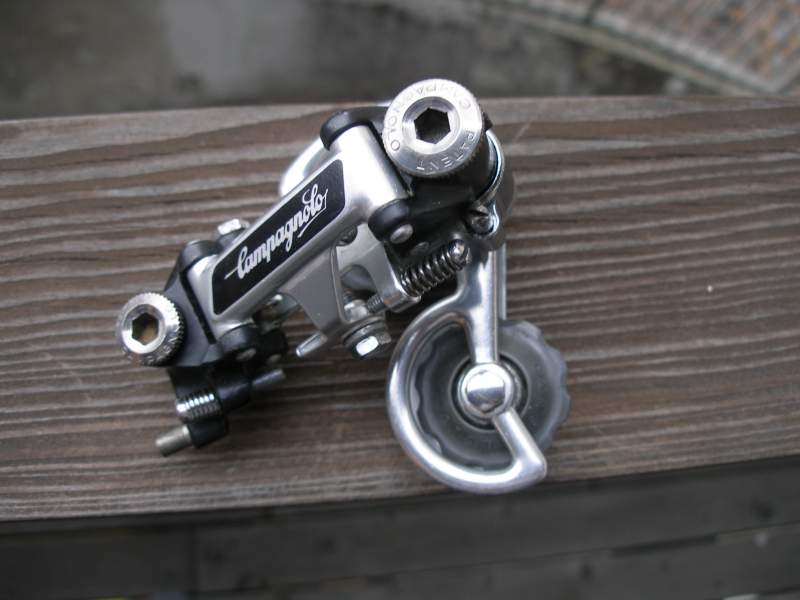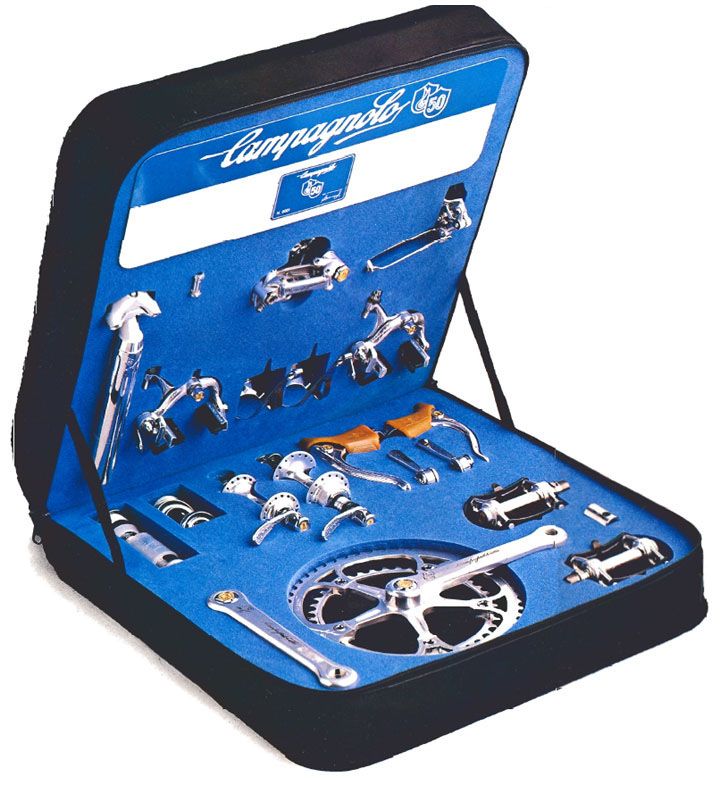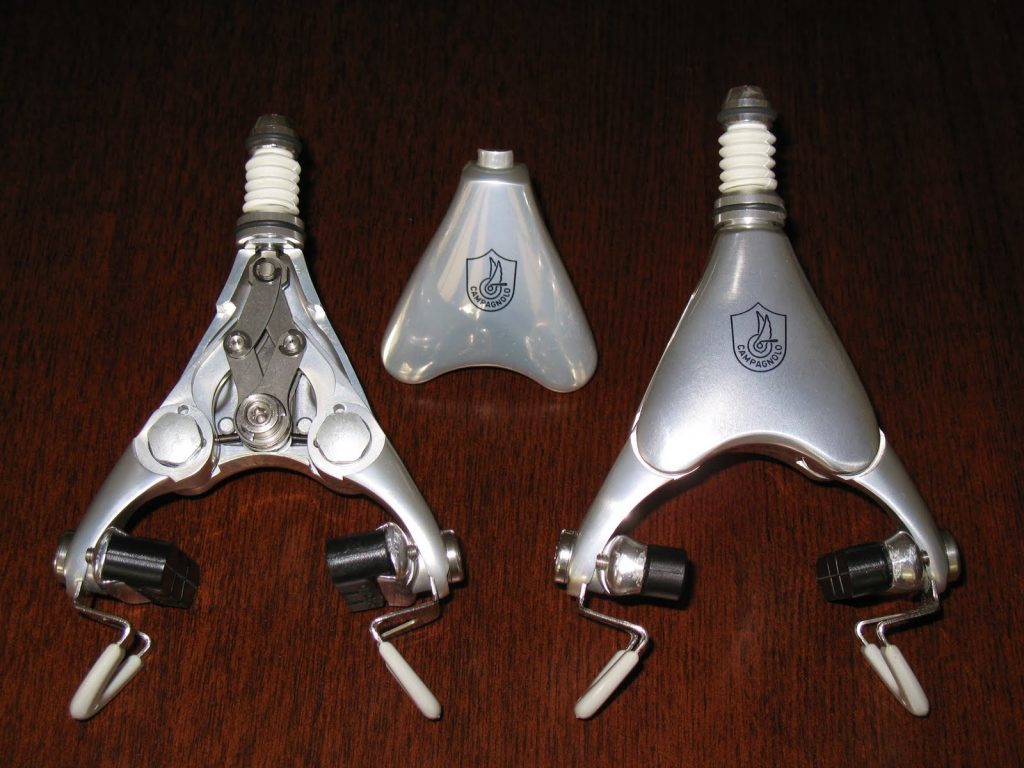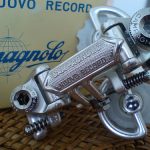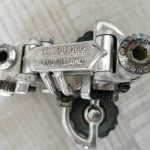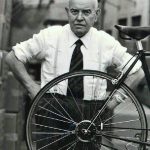Tullio Campagnolo's efforts are finally beginning to have success. The company expands, staff are recruited and new factories are opened in Italy and abroad. After WWII, the rear derailleur Corsa was the most commonly used gear in cycling and for non-professionals, Campagnolo was on the same level as the French Simplex.
At the end of the 1940s, Tullio designs an ingenious system in which the 2 levers are combined into 1 lever. With this new derailleur, Il Campionissimo Fausto Coppi wins Paris Roubaix in 1950 and Tullio immediately renames the derailleur to Paris Roubaix.
Derailleur Gran Sport
With the arrival of the 1950s, a period of economic reconstruction begins, which also benefits the bicycle industry. In Italy, cycling and the Giro d'Italia are considered to be the symbol of the resurrection. The legendary duels between Gino Bartali and Fausto Coppi are daily topics and the Italians just can't get enough of them.
However, Tullio is not going to stop and although the Paris Roubaix derailleur has only just been released, he is already working on another ambitious project: a more compact, easy to operate derailleur! In 1950 the new derailleur Gran Sport is being presented at the bicycle and motorcycle salon in Milan. A bronze chromed parallel gear unit with 2 wheels that are operated via a steel wire connected to a handle attached to the inclined tube of the frame.
The Gran Sport can control no less than 5 gears and no longer you have to step back to change gears. A revolutionary system!
A few months later, the Gran Sport was successfully launched on the market. In no time, practically all bicycle manufacturers switch to this new ingenious gear and champions such as Bartali, Coppi and Magni are very enthousiast.
The French Simplex is finally thrown off the throne and will not recover from this punch. Gran Sport will remain the best-selling derailleur for 13 years.
The Record Groupset
During the 1950s, Campagnolo is the undisputed market leader and Tullio is maniacally involved in public relations. He delivers prototypes to about 10 cycling teams, both professionals and amateurs, and follows the progress and development in person.
He also maintains excellent relationships with various bicycle manufacturers including Bianchi, Legnano, Cinelli, Coppi, Brivio, Masi,… First of all, he considers his customers as friends and colleagues with whom he, together with a good glass of wine, spends hours with the intention to continuously improve and perfect his products.
From this experience, the idea grows to realize a complete kit of components that interact with each other and that can provide maximum performance. This led to the creation of the Record groep which is composed of crankset, bottom bracket, hubs, headset, pedals, seatpost and a new redesigned front derailleur while the Gran Sport rear derailleur remains unchanged until 1963 when the new derailleur Record makes its appearance.
The Record derailleur differs from the Gran Sport only in the position of the chain guide which is now asymmetrical with the top sprocket for greater efficiency and faster shifting. In the following years, the contact between the 2 front sprockets decreased, so that a smaller sprocket than the 47 can also be mounted.
The 60's and 70's
In the 1960s Campagnolo experiments with light alloys which allows them to further expand their range. That's how they launch in 1968 a complete brake set from what becomes a huge success and heralds the economic decline of the hitherto undisputed market leader Universal. (more about the history of Universal brakes)
In the same year Campagnolo launches the groupset Nuovo Record which is a general improvement of the Record group as the name says. The group is made entirely of light alloys and the wheels are made of nylon, allowing 6 gears to be operated by the rear derailleur.
During this period Campagnolo also expands its range considerably and is no longer limited to the bicycle industry. The enormous research and experiments with light alloys such as aluminum, titanium and magnesium lead to collaborations with the car industry and even aerospace.
The economic boom also opens up new commercial prospects. The racing bike is no longer used only by amateurs and professionals, but also by ordinary people. Bicycles are offered in all price ranges and component manufacturers must also follow this trend. Campagnolo launches the derailleur Valentino , an economic version of the Record and named after Tullio's son.
In 1973, thanks to the extensive research into new materials, the Nuovo Record gets a more modern version that is now called Super Record. This is distinguished from the Nuovo Record by the black anodized color of some parts and the use of titanium.
In 1979 the Super Record was modernized yet again and the Campagnolo logo was given a black background.
Campagnolo is the world leader in the 1960s and 1970s. Almost all racing bikes of a higher price range are equipped with Campagnolo.
Super Record gold plated and C-Record derailleur
In 1983 Campagnolo Srl celebrates its 50th anniversary with the release of a limited edition of the Super Record group. For this occasion aesthetically improved and in some places covered with 18 carat gold. A collector's item that is very desired by passionate Campagnolo enthusiasts.
However, the joy is interrupted abruptly by the death of Tullio at the age of 81 in the same year. At the head of the empire comes his son Valentino who is determined to continue his father's life's work with the same passion.
First evidence of this is the launch of the revolutionary high-tech group C-Record in which for the first time the rules of aerodynamics are applied. The brakes, called Delta or also Croce d’Aune, are designed in a trapezoid shape with the mechanism concealed to minimize the air resistance.
The group C-Record is the last group with pedals with hooks and straps and brake cables on top of the handlebars and is considered by many to be the start of modern cycling.

